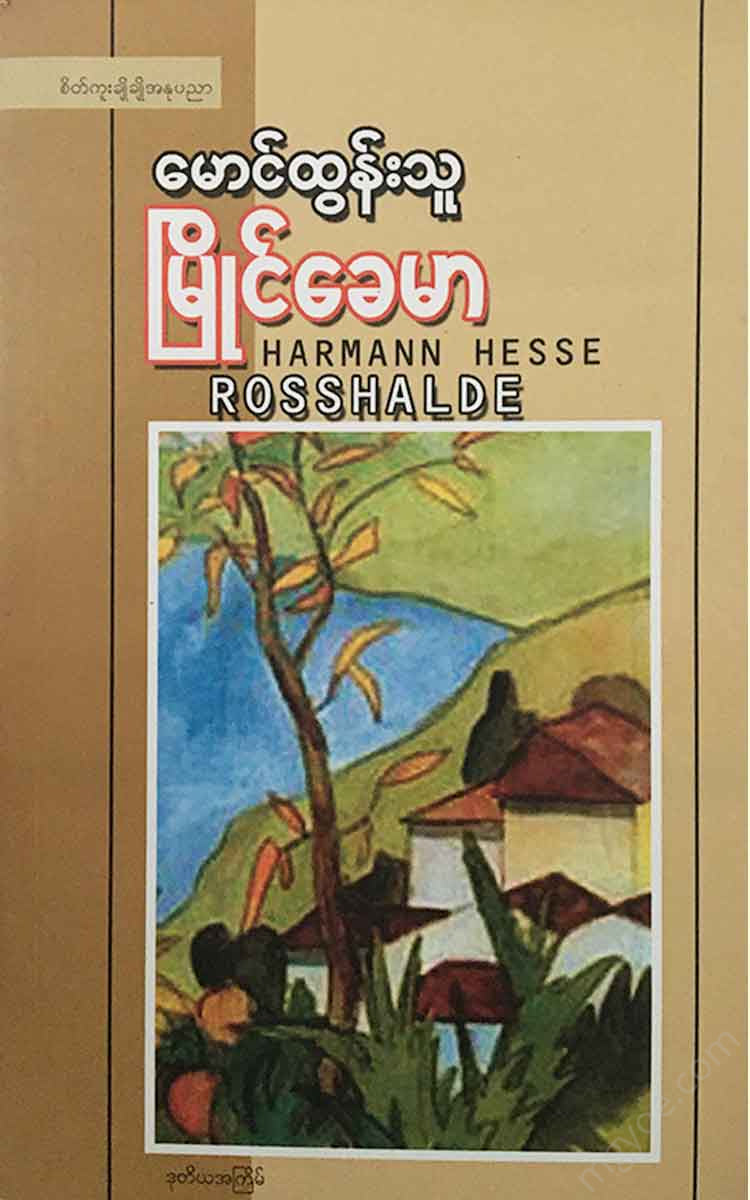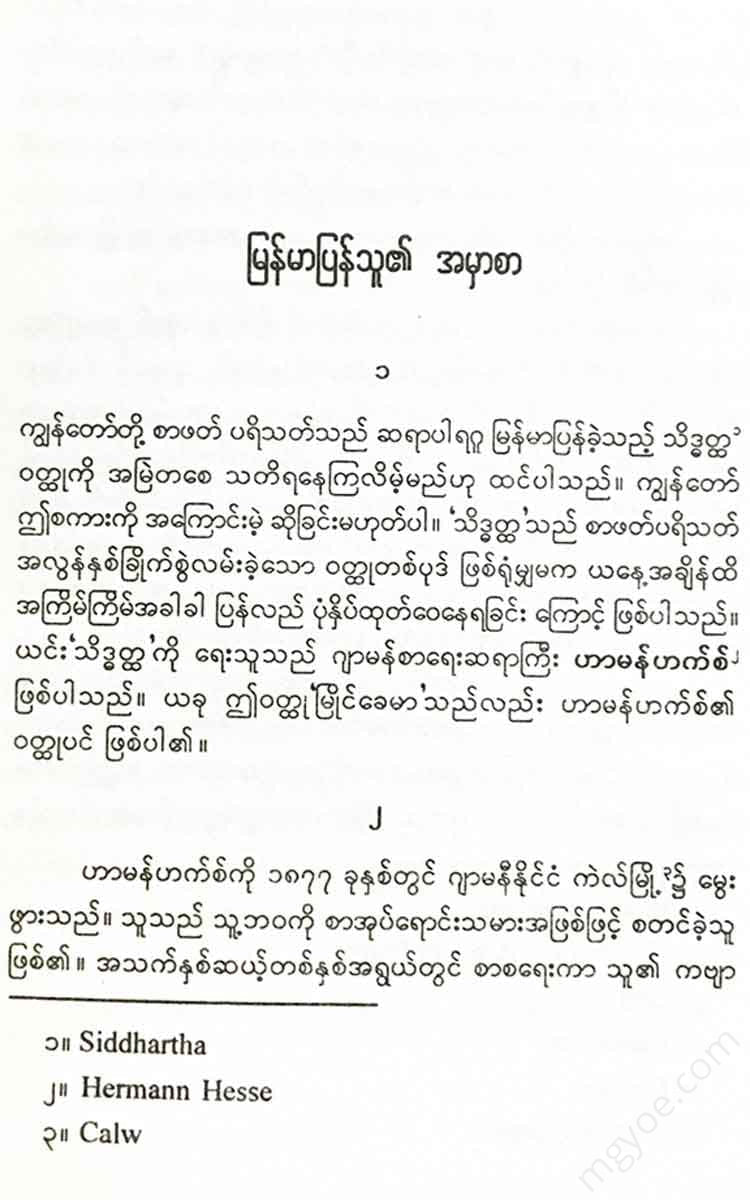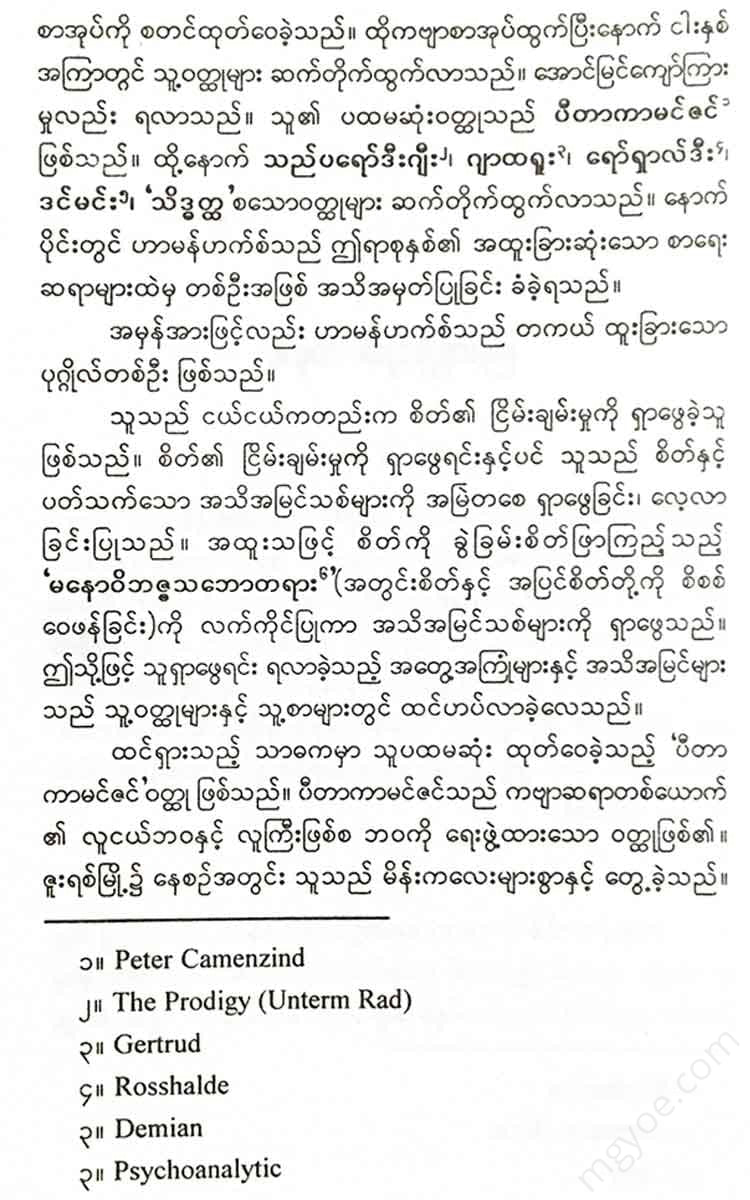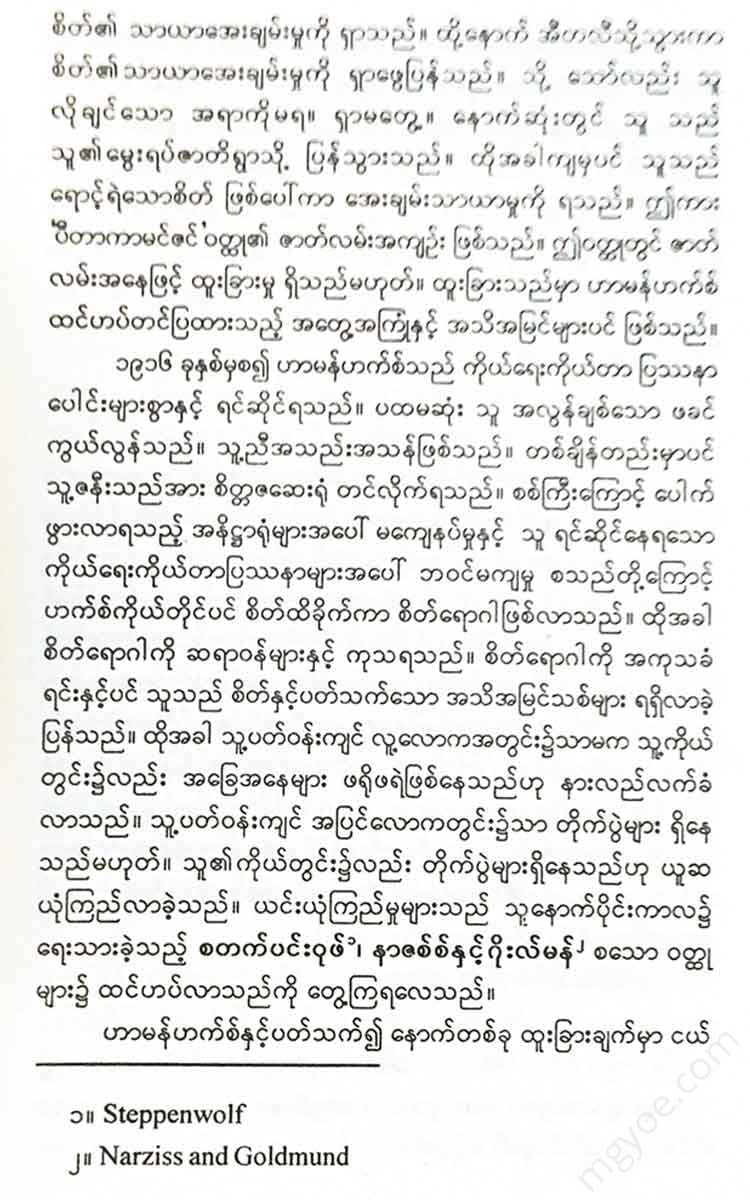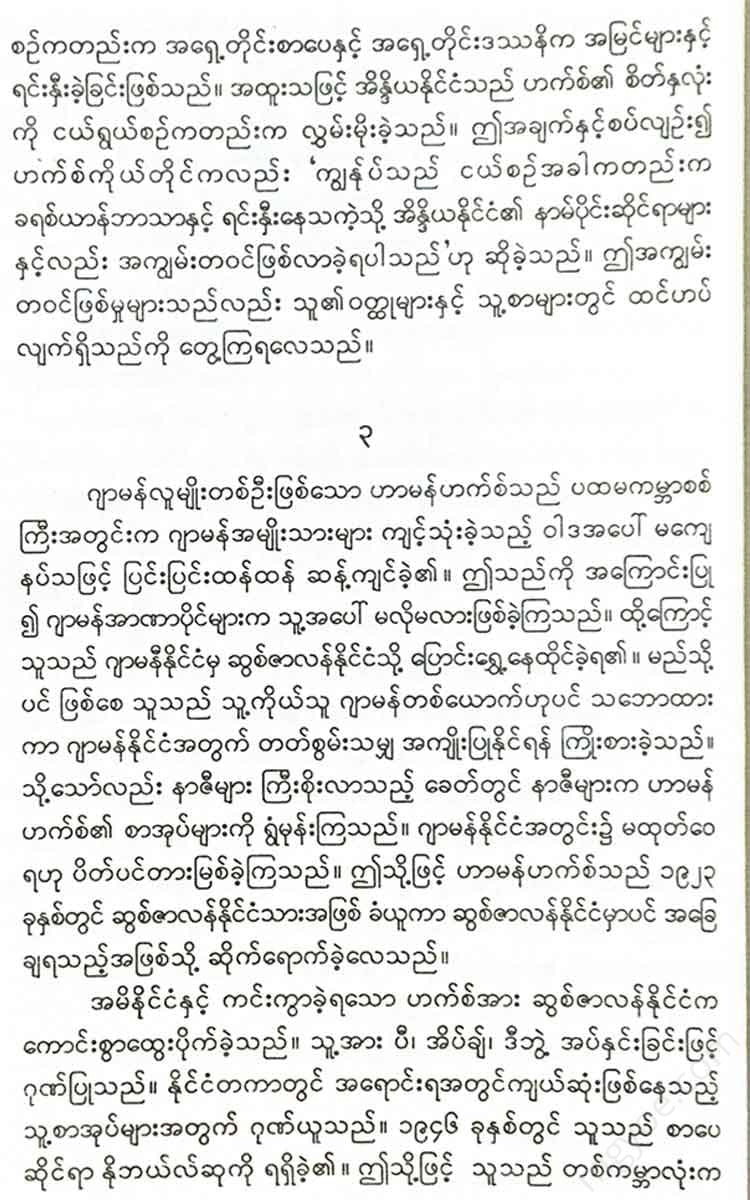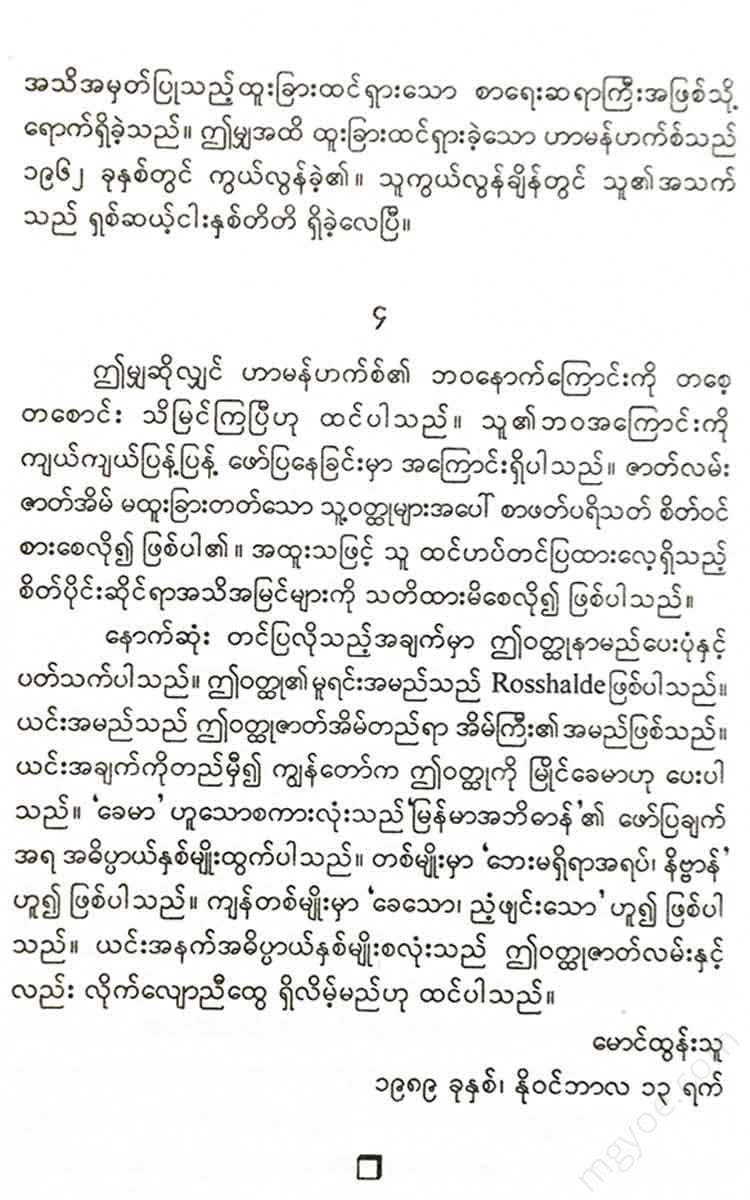စိတ်ကူးချိုချိုစာပေ
Maung Tun Thu - Myaing Khema
Maung Tun Thu - Myaing Khema
Couldn't load pickup availability
( 1 )
About ten years ago, when Johan Varagu bought the Myaing Khem farm and moved in, this farm was just an old abandoned farm.
The walkways in the park are overgrown with grass and shrubs. The benches are covered in moss. The paving stones are cracked and crumbling. The entire park has not been maintained and is overgrown with bushes and shrubs, making it an unsightly mess.
The farm is about eight acres in size, and there are only two buildings on the farm. One is a large, old, dilapidated house with a horse stable at the back.
The other one is smaller. It is located in the middle of the garden and was built specifically for summer residence. The house looks like a small monastery. The hinges are broken and the door is crooked. The walls are covered with moss and mold.
Immediately after purchasing the large estate, the new owner demolished the dilapidated house, leaving only ten stone steps leading from the front door to the fish pond in the garden.
Varagu's art studio was built on the site of the small house. Varagu then painted in this studio for many years. Although he lived in a large house, he spent all his time in this studio.
However, the differences in his family grew stronger day by day, and when his eldest son was finally sent away to boarding school, he left the house and servants in the hands of his wife, and he himself moved out of the house. He built two additional rooms next to the studio, and in that room he lived quietly, like a young man.
It was a pity, for a grand and beautiful house. Flora Raghu and her seven-year-old son, Peiri, lived upstairs. She had to receive guests every night, but they never came in large numbers. As a result, many rooms in the house were empty all year round.
The little boy, Pai Yi, is the love of both parents. He is the only bond between his father and mother. He is not only a bridge between the house and the studio, but in a way, Pai Yi is also the sovereign lord of Myaing Khmer.
The land that Havaragu owns is his studio, a lake, and an old hunting ground. His wife owns the main house, a lawn, and a grove of lemon trees and chestnut trees.
The two of them did not trespass on each other's territory. Except for the time of eating, when Varagu came over to the big house, they did not meet each other at other times.
The younger son, Pai Yi, did not recognize this fact. In fact, he did not understand the difference in territory and life between his father and mother. He was not old enough to understand.
He moved freely around the house. He also occasionally went in and out of his father's studio and study, which was called the new house.
Likewise, the corridors of the mansion, the painting room, and his mother's rooms are places he can enter and leave as he pleases. He is also the master of the strawberry trees in the chestnut grove, the flowers among the lemon trees, the fish in the pond, the bathtub, and the gondola.
But when dealing with his mother's servants and his father's servant Robert, he felt in his heart that he was a master and a protector.
In the eyes of his mother's friends and guests, Pierre was the son of the landlady, but in the eyes of the French-speaking gentlemen who sometimes visited his father's studio, Pierre was the son of the painter.
Photographs and portraits of Peiris hang in his father's bedroom, as well as in his mother's rooms in the mansion.
In fact, Pai Yi's life is even more comfortable and prosperous than that of children born to married parents. He does not live and grow up under strict rules. He has complete freedom. Sometimes, when he encounters problems and difficulties in his mother's territory, the territory by the lake gives him security.
It had been a long time since Pierre had gone to bed. The last window of the mansion, lit by a light, had already turned dark and pitch black by the time eleven o'clock struck.
After midnight, Johan Varga, who had gone into town and spent time with friends at a restaurant, returned alone.
It was a summer night, and the sky was thick with clouds. For Baraga, who had passed through the cool breeze, the wine, cigarette smoke, loud laughter, and harsh jokes had disappeared. He could breathe in the warm, humid air. Baraga, who was walking briskly along the road between the dark wheat fields, was gradually approaching Myaing Khem Maryan.
As he entered the courtyard gate, Varaga glanced at the mansion. The facade of the house, standing tall against the darkness of the trees, was full of charm.
He stood there for a few minutes, watching, feeling like a traveler passing by, whose heart is filled with joy at the sight of a beautiful sight.
He continued along the high fence, towards the entrance he had quietly dug. If you enter through this entrance, you will find yourself on a footpath through the forest. If you continue along that path, you will reach his studio, right?
His senses were alert. He walked with light, agile steps along the path of the shady garden, covered with bushes. From between the treetops that overshadowed the pond, the gray sky entered his vision. Then his house appeared before him.
The small lake was dark under the silent darkness of the night. A faint, pale light hung over the surface of the water. It was as if an extremely thin membrane had been placed on it.
Varagu looked at his watch. It was almost one o'clock. He opened the door to the living room. Once inside, he lit a candle and took off his clothes. Then he left the house and climbed the stone steps into the pool. The water was sparkling before his knees.
He dove into the water and swam briskly. The fatigue he had gained from spending the evening in unusual ways was relieved.
He climbed back out of the pool and entered the house, still soaking wet. He grabbed a towel and wiped the water from his short-cropped hair. He climbed the stairs without shoes and entered his studio. The room was large, but bare of furniture. He flipped on the light switches.
He walked over to the tripod where a canvas was placed. The canvas on the tripod was a painting he had hung a few days ago.
He leaned forward, his hands on his knees, and looked at the painting. The fresh colors on the canvas reflected the harsh light.
He stared at the painting for two or three minutes. Not just casually, but intently, his eyes taking in the entire painting, from the first brushstroke to the last.
He had developed the habit, starting a few years ago, of looking at the images in the painting he had finished before going to work the next day, so that he would remember them when he went to bed.
He turned off the lights, picked up the candle, and went to his bedroom. When he reached the bedroom door, he immediately opened it, but before he could go in, he took a piece of chalk and wrote on the blackboard that was hung on the door, “Wake up at exactly seven, have coffee at nine.” Then he closed the door and went to bed.
He lay quietly on the bed, but his eyes were still open. He was trying to bring back to his mind the images from the painting he had seen earlier. When he had what he wanted, he closed his eyes and let out a slow sigh. Soon he was asleep.
When morning dawned, Robert the butler woke him up at the appointed time. He got up immediately and washed his face with cold water. He put on his faded gray suit and went out to the studio. Robert had already opened the Chinese cards. On a small table was a plate of fruit, a bottle of water, and a piece of bread.
He stood looking at the painting on the tripod, reached for the bread and took a bite. He moved closer to the painting, then stepped back, studying it closely. He chewed the bread. He reached for a handful of cherries from the fruit bowl.
He saw letters and newspapers lying on the table. But he didn't pick them up. A moment later, he was sitting on a folding chair, looking intently at his newly painted painting.
The painting depicts an early morning landscape. This is a landscape that the artist himself saw and that he had drawn many sketches of along the way.
While she was traveling, she stopped at a small restaurant on the upper reaches of the Rhine River. She met a friend she had arranged to meet.
That night, as it was raining heavily, he sat in the smoke-filled beer room, drinking beer. Then he spent a miserable night in a bed that was so damp that he could barely breathe, inhaling the smell of milk and whitewash on the walls.
The next day he woke up before sunrise. (7) He was restless and restless. The shop door was not open. It was locked. He opened the window of the beer hall and climbed out. He got into a boat that he found on the banks of the Rhine and rowed it out across the open river at dawn.
After a while, he thought of turning back. At that moment, he saw a fisherman coming towards him in a boat from the other shore, a short distance away. The fisherman's figure was blurry under the milky light.
The size of the fisherman's boat seemed to be much larger than it actually was. The view and the strange light he saw fascinated him.
While he was still staring, a fisherman approached him. He stopped the boat at one point and pulled a net out of the water. Two large silvery fish came rolling along with the net. Then both fish jumped into the boat with a loud thud.
He asked the fisherman to wait a moment, then he took out his paint can and drew a sketch with watercolors.
That day, Varaga spent the whole day in the village, sketching and reading. The next morning, he went out of the village and drew some pictures. Then he continued his journey.
Since then, the image of this painting has appeared in his mind frequently. It has appeared and disappeared in his imagination, and his mind has been exhausted. Then the appearance of the landscape has become clear. Now, he has been drawing this painting for several days. It has almost reached the point where he can finish it.
He usually painted under bright sunlight or in the dappled light of places like parks and forests. Therefore, the coldness of the silvery color in the painting he was currently painting troubled him greatly.
However, it was only recently that I realized that this color was a sign that he was using a new color. Now, the uniqueness of this painting seems to be a good sign. It is understood as a unique innovation and a higher level than the usual portrait that is praised.
In fact, in this painting, a mysterious depth of nature seeps through the glassy surface, giving it a complete, unadulterated authenticity.
The artist studied the painting with interest, contemplating the colors on the board he was mixing the painting on. His mixing board was different from the boards he had used before. The reds and yellows were almost nonexistent.
The water and air are drawn in the picture. The surface is cold.
